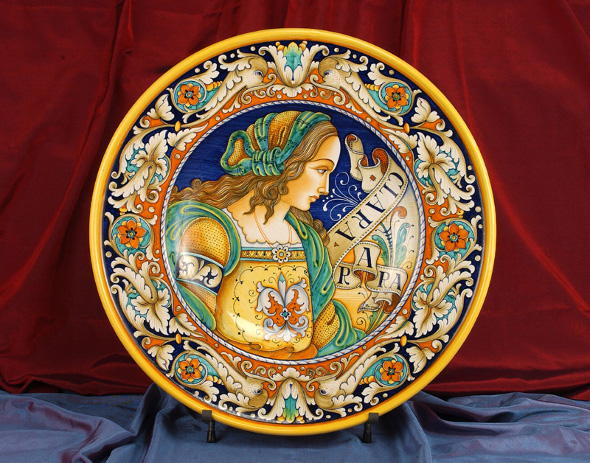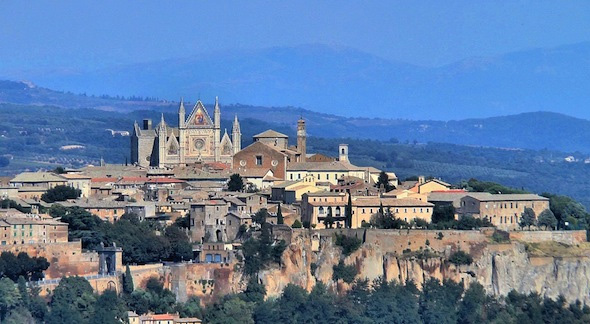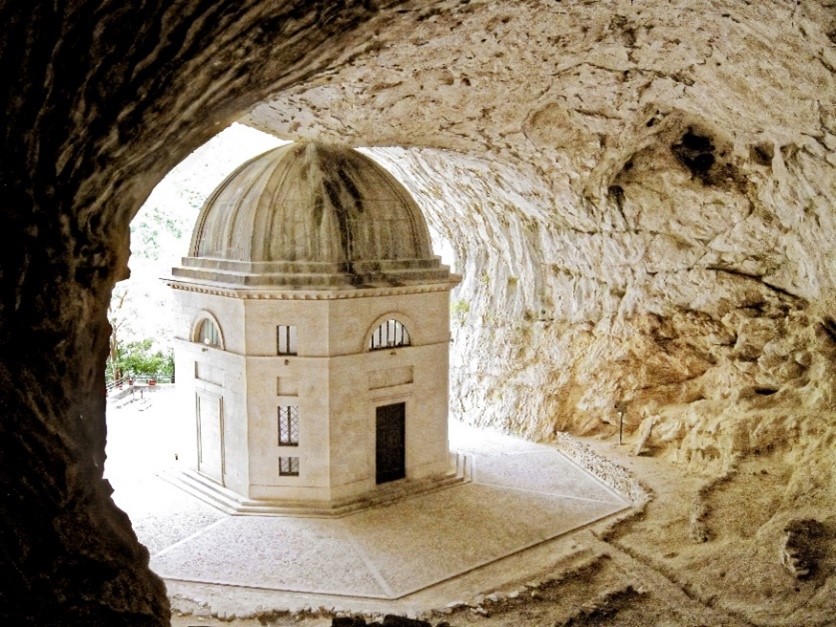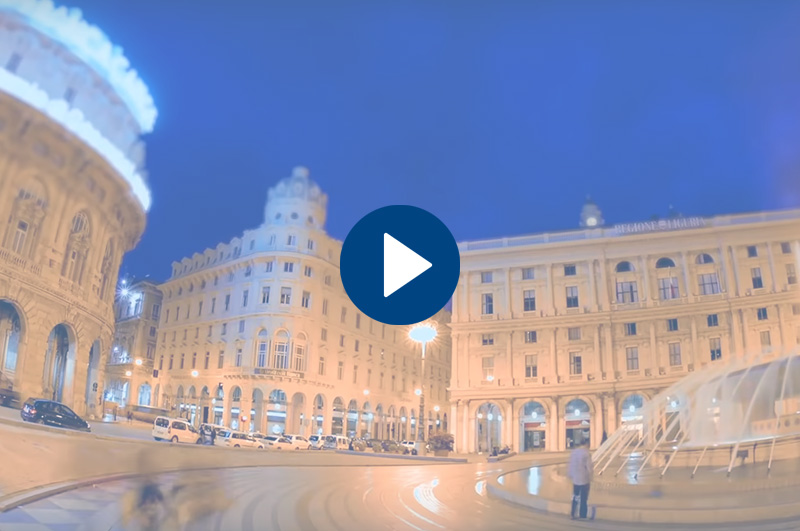UMBRIA STAR TOUR
The hidden gems of central Italy: Assisi, the land of Saint Francis, quaint Spoleto, Perugia, the perfect mix between traditions and modernity, Orvieto and its majestic Duomo, and Genga with its unique church in a cave.
At the discovery of Umbria and its wonderful villages and small towns.
WHAT'S INCLUDED:
Accommodations in Assisi area with Continental Breakfast, to be chosen among the following:
- Villa
- Relais
- Country House
- Hotel
Private Guided Visits / Tours / Activities to be chosen among the following (**):
- 3-hour private walking tour of Assisi city centre with an Authorised Tourist Guide
- Truffle Hunt with lunch in Assisi area
- Umbrian Cooking Class in Assisi area
- Half-day excursion to Todi – Visit of a local olive oil mill with tastings
- Half/Full-day excursion to Spoleto
- Full-day excursion to Deruta and Montefalco – Visit of a local artisan laboratory of ceramics in Deruta - Visit of a local wine cellar with tastings
- Full-day excursion to Perugia - 2-hour private walking tour of Perugia city centre with an Authorised Tourist Guide – Chocolate Making Experience in Perugia
- Full-day excursion to Orvieto and Civita di Bagnoregio - 2-hour private walking tour of Orvieto city centre with an Authorised Tourist Guide
- Full-day excursion to Fabriano and Genga
(**) All transfers and tours by private car (2 pax) / minivan (3 to 7 pax) / minibus (8 to 10 pax) / Rental car
Admission tickets to be chosen among the following:
- Duomo Cathedral in Assisi
- Duomo Cathedral in Orvieto
- Tempietto del Valadier in Genga
- Paper Museum in Fabriano
Full emergency assistance 24 hours/day by our Back Office
List of recommended restaurants along the itinerary
All taxes
Options:
- Other options upon request
PERUGIA & ASSISI
Perugia lies on a hill 500 m. above sea level, with the old town spreading all around it and partly surrounded by Etruscan and Medieval Walls. Unfortunately, only a few ancient city remains have survived; the remaining urban centre is mainly medieval in style. The old town is, in fact, a typical Medieval village, one of the most beautiful in Italy.
A sightseeing tour includes Piazza Matteotti, also known as Sopramuro (“above the walls”), with Palazzo dell'Università Vecchia and Palazzo del Capitano del Popolo. Beside it, we will admire one of the most beautiful squares of Italy: Piazza IV Novembre, which can be considered the monumental and social core of the city, with at its centre Fontana Maggiore, a sculptural masterpiece by Giovanni and Nicola Pisano. This architectonical complex includes Palazzo dei Priori, built between the 13th and 14th Centuries, a symbol of the civil power of the time and now the home of the National Gallery of Umbria, which hosts the most important collection of Umbrian paintings, including several pieces by Perugino.
Assisi is the birthplace of Francis, the nobleman who renounced all his possessions to devote his life to helping the needy and became the most acclaimed Saint of the Catholic Church.
The splendid Basilica, one of the emblems of Christianity, located on Mount Subasio and overlooking the entire valley, is dedicated to him. Apart from being a strong appeal to millions of religious believers, the Basilica is a monument of great artistic value. The construction of the Basilica began two years after his death, in 1228, and between the end of the 13th and the beginning of the 14th century, the basilica's walls were frescoed by the best artists of that time: Giotto, Cimabue, Simone Martini and Pietro Lorenzetti. St. Francis' Basilica consists of two churches laid upon each other and a crypt containing the tomb of the Saint. The Lower Basilica presents a simple facade with a double front portal embellished with a rose window and a mosaic. The interior is decorated with frescoes by some of the most important painters from 1200 to 1300, from Cimabue to Giotto, from the Lorenzettis to Simone Martini.
In the Upper Basilica, you will admire the frescoes of the life of St. Francis, painted by Giotto, the stories of the Old and New Testament covering the entire nave, and other beautiful frescoes by Cimabue and Torriti.
Another figure who profoundly influenced these places is Saint Clare, to whom the homonymous Basilica -with a facade made of white and pink stone and divided into three sections by horizontal cornices - is dedicated. The interior frescoes and the remains of the Saint are visible through a window in the crypt.
Try to enjoy the mystical atmosphere of Assisi:
"Be praised, my Lord, through our sister Mother Earth,
Who feeds us and rules us,
And produces various fruits with coloured flowers and herbs."
(St. Francis, Prayer of the Canticle of the Creatures)

UMBRIA
Umbria is the greenest region of Italy, and its citizens are famous for their hospitality. This morning, our first stop will be Spoleto, a medieval hill town in the Umbria region, famous for its summer music festival, “Festival dei Due Mondi”. Thick walls and a magnificent gorge surround the city, and fine medieval and Roman monuments sit along the streets. The Duomo is one of Spoleto's most pleasing sights: dating back to the 12th century, the cathedral is set against a backdrop of hills and valleys. The Rocca is high above the town, a Papal fortress used as a prison until the 1980s. A massive bridge, Ponte delle Torri, built in the 14th century, functioned as a bridge and aqueduct; we can walk on it for breathtaking views of the valley and gorge below.
In Spoleto, you can try a typical Spoletan food, “torta al testo” (bread prepared with water, flour, salt, pepper, and olive oil and cooked on a particular marble stone in a wood-burning oven); it is sometimes stuffed with ham, sausage, or simply with herbs prepared in olive oil.
Then, you’ll head for Deruta, famous for its splendid, brightly coloured maiolica. The production of ceramics in Deruta goes back to the 13th century. In those times, small “bottegas” produced objects of everyday use: jugs, bowls, and basins. Maiolica reached its apex in the 16th century, with artists making various motifs, such as mythological figures, battles and religious scenes.

ORVIETO & CIVITA DI BAGNOREGIO
Orvieto in Umbria is perhaps the most beautiful hill town in Italy, perched up on a volcanic rock, its history dating back to the Etruscans.
Although just an hour from Rome, the architecture is different, with many of the buildings constructed out of “tufo”, a volcanic rock. Orvieto’s main attraction is its 14th-century Cathedral – a masterpiece of Gothic architecture with a glistening façade of stained glass, mosaics and sculptures. Another attraction is St. Patrick’s Well, a 62-meter-deep (203 feet) feat of engineering characterized by two spiral staircases that wind around the well (yet never meet), with 248 steps down to the water. A pleasant guided tour along a straightforward route makes it possible to know Orvieto’s underground world, created by its ancient inhabitants over about 2,500 years of uninterrupted digging. A tour at the discovery of a millenary, surprising and unexpected “Underground City”, you will surely enjoy it!
At lunch, don’t miss “salumi di cinghiale o cervo” (boar or deer sausage) and pecorino cheese and taste the region's prized white truffle oil together with the delicious white wine of the area, Orvieto Classico!
Civita di Bagnoregio, the spectacular “borgo” slowly sliding towards the valley, is also known as the “Dying City”. The town is famous for its unique position atop a plateau of friable volcanic tuff overlooking the Tiber valley. It is in constant danger of destruction as the edges of the plateau collapse due to erosion, leaving the buildings to crumble as their underlying support falls away.

GENGA & FABRIANO
In Genga, inside the Red Gorge Regional Park, inside a large cave, lies a hidden jewel worth the visit: the small Valadier Temple.
The Valadier Temple is an octagonal sanctuary in neoclassical style built in 1828 by Pope Leo XII and designed by the famous architect Giuseppe Valadier.
Nestled between the rocky walls of the mountain, the temple has an octagonal base and is entirely built with blocks of white travertine extracted from a quarry above the cave in which it stands, in contrast to the dome covered with lead. On the facades, there are three orders of windows and two entrances to the temple, finally, the statue of the Virgin with Child in white Carrara marble by Antonio Canova, placed on the altar inside, is even more precious because it is inserted in such an impervious context.
Do you know how paper was made in the Middle Ages? Fabriano was the most important centre for the production of handmade paper until paper was industrialised. Here, we will assist in a live demonstration of hand-made paper, performed by the Museum's Master paper makers, viewing the antique watermarks from the 13th century to modern day.
You won’t leave Fabriano before tasting its excellent salame, a Slow Food Italian Presidium, with a glass of Torgiano red wine!

